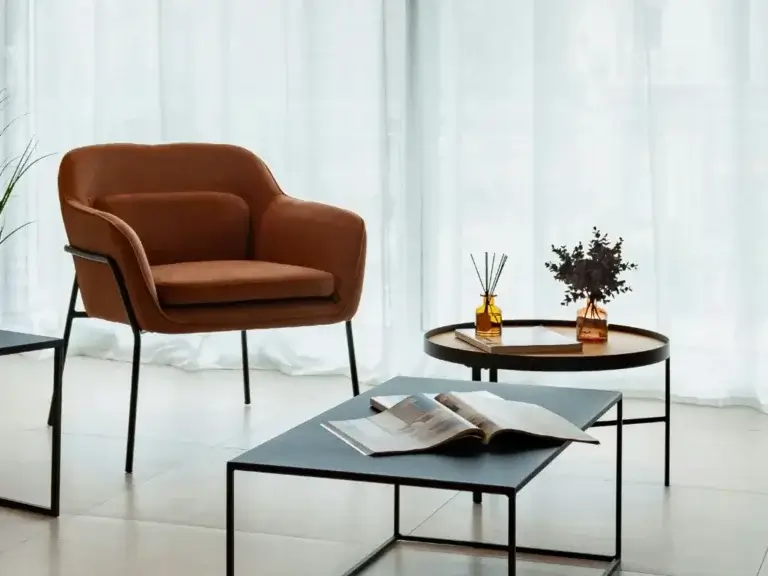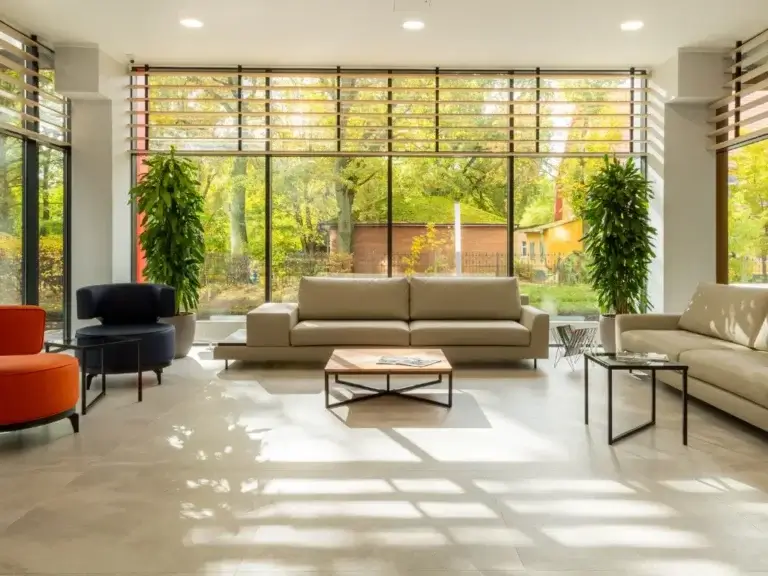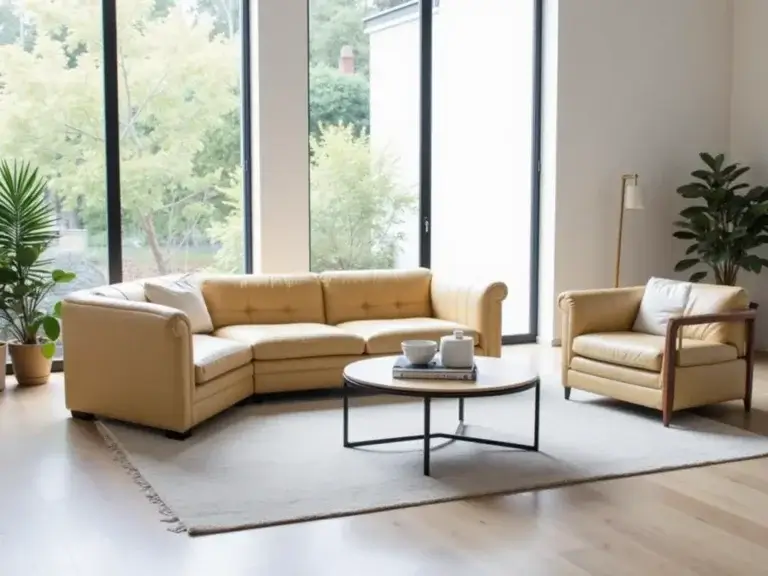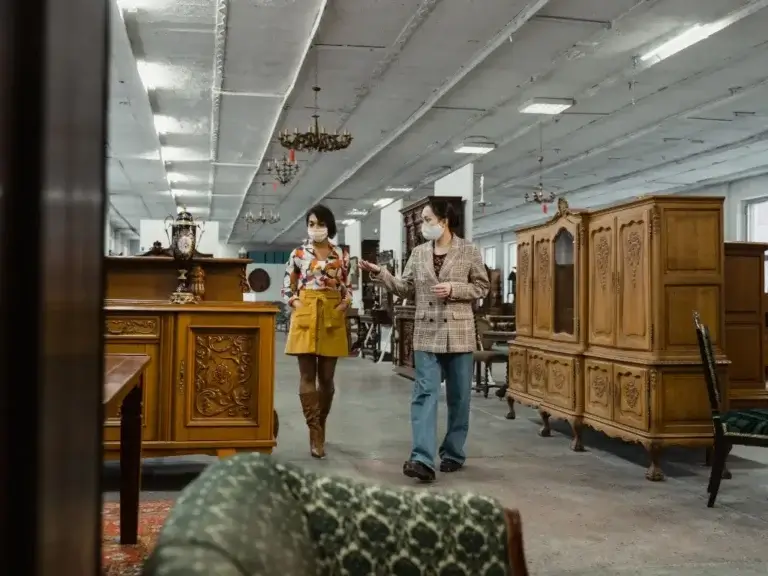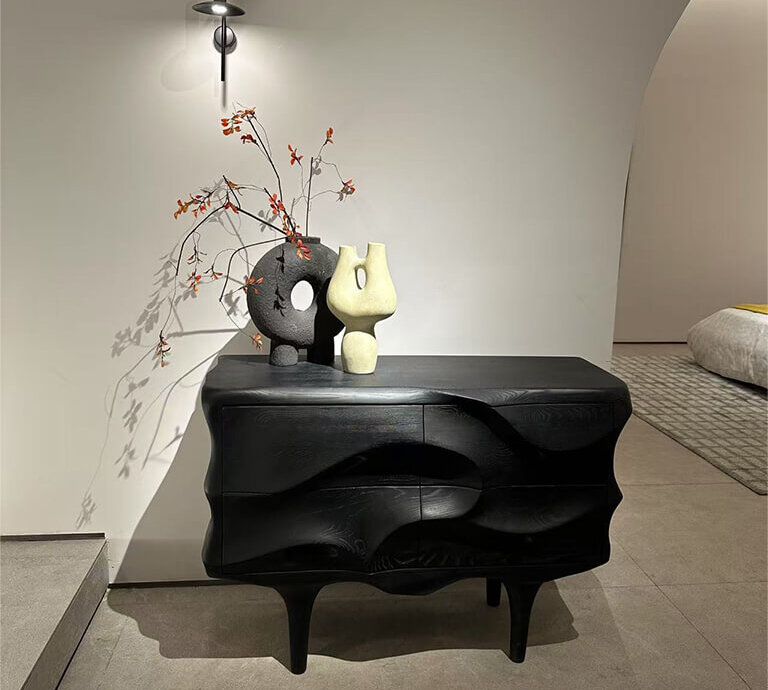Thinking about Acacia wood furniture? Read This First!
Curious about acacia wood furniture? This post highlights its unique grain, durability, and sustainability. You’ll learn care tips, compare them with other hardwoods, and get essential buying advice. Perfect for those seeking stylish, strong, eco-friendly furniture!
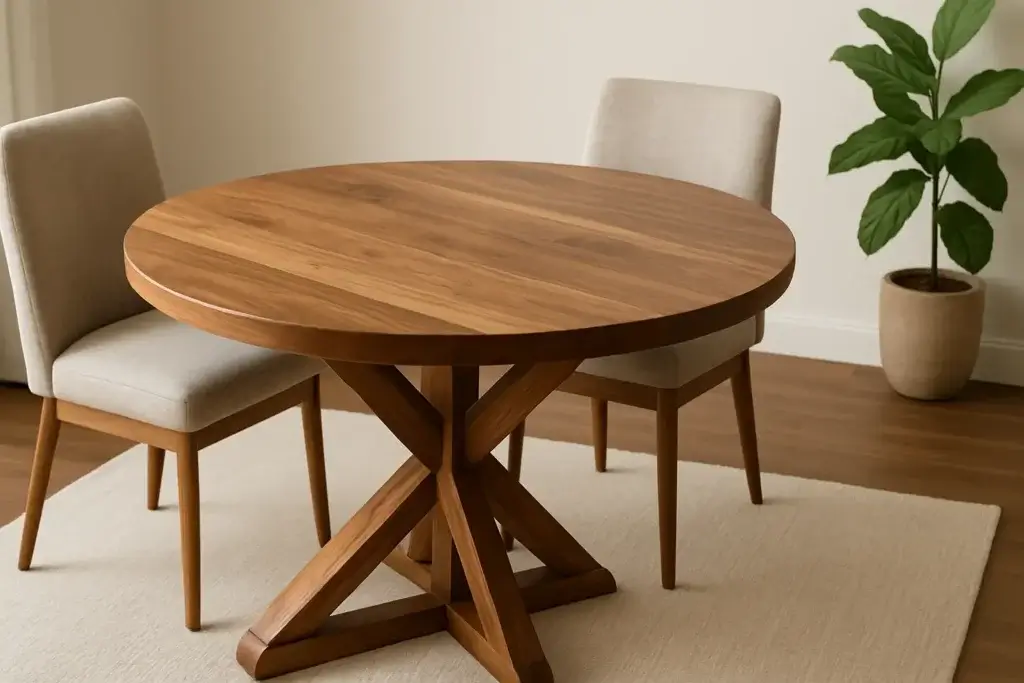
What is Acacia wood? An Introduction for Furniture Shoppers
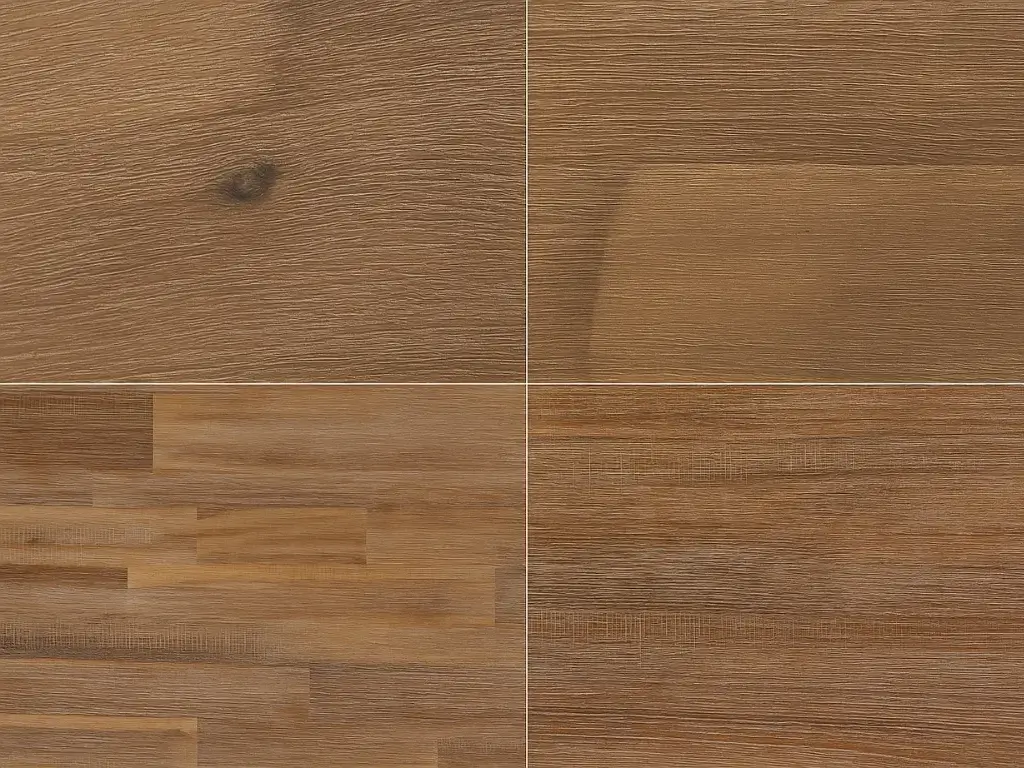
Origins and Unique Qualities of Acacia Wood
Acacia wood comes from the acacia tree. This tree has many species, mostly found in Africa, Australia, and parts of Asia. People celebrate this wood for its impressive hardness, striking grain patterns, and warm colour tones that range from light gold to deep amber. Unlike some tropical hardwoods, many people sustainably harvest acacia, making it a favourite among environmentally conscious shoppers.
When I choose acacia wood furniture for my clients, I always feel impressed by its strength and beauty. Sometimes, they notice its durability even before I point it out. These natural qualities make it durable in busy homes. The unique colours and textures give each piece its character.
Why Acacia Wood Appeals to Modern Buyers?
Modern furniture buyers are drawn to acacia not just because of its strength, but also for its versatility. Acacia wood furniture fits well with modern, rustic, and traditional styles. This includes dining tables, chairs, and storage units.
Clients often express their appreciation for its organic feel, which engineered materials cannot replicate. Acacia wood is usually cheaper than teak or oak. It also lasts a long time, which is a significant advantage.
More people care about sustainability now. Acacia is a great choice because it is a renewable resource. Both beautiful and practical.
Key Benefits of Choosing Acacia Wood Furniture
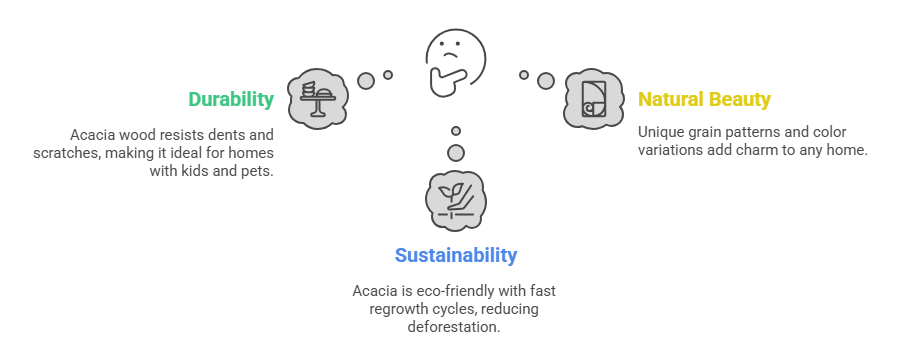
Durability and Longevity in Everyday Use
For furniture that can handle spills, meals, and family gatherings, acacia wood is a great choice. I’ve seen dining tables and benches made from acacia withstand years of use and still look great.
Its dense grain structure helps resist dents and scratches. However, it is not completely immune. I always remind buyers to use coasters and placemats for extra protection. Compared to softer woods, acacia’s lifespan makes it a sensible long-term investment for homes with kids and pets.
Natural Beauty: Grain Patterns and Colour Variations
What hooked me on acacia wood furniture was the mesmerising array of grains and hues. Each board, each tabletop, has its unique swirls and stripes, making every piece one-of-a-kind. The wood begins light but becomes a richer, honey colour over time. This change happens especially with natural light.
This natural evolution is part of its charm. Many of my clients want furniture that changes with their homes. Acacia provides natural beauty and requires minimal care.
Eco-Friendly and Sustainable Qualities
Sustainability is a growing priority for furniture buyers, and acacia wood stands out for its eco-friendly credentials. Many organisations manage acacia forests responsibly, often achieving fast regrowth cycles compared to slower-growing hardwoods. I always suggest checking for FSC or similar certifications if sustainability is a major concern for you.
Choosing acacia wood furniture helps reduce deforestation. This is true whether the price is similar to synthetic options or slightly higher than mid-tier hardwoods.
Are There Drawbacks? What to Watch Out for with Acacia Wood Furniture
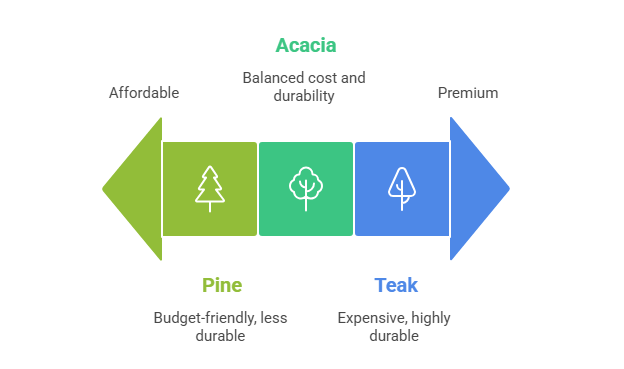
Sensitivity to Moisture, Heat, and Sunlight
For all its strengths, acacia wood does have some quirks. Acacia wood is more sensitive to extreme changes than teak.
I recommend keeping acacia wood furniture away from radiators, direct sunlight, and damp places. Over time, prolonged exposure to moisture can cause warping, while excessive heat and UV rays might fade its colour. That said, with common-sense placement and care, most issues are easily avoidable.
Maintenance Tips to Keep Acacia Looking Its Best
I regularly dust my acacia wood furniture with a soft cloth and clean spills immediately. Every few months, I wipe and dry them to prevent watermarks.
A light application of mineral oil can help preserve the wood’s lustre, especially for tabletops and butcher blocks. Acacia wood has a natural patina.
Unlike synthetic finishes, it does not wear out but becomes more beautiful with age if well cared for.
Cost Considerations Compared to Other Woods
When clients ask about the price of acacia wood, I tell them the truth. It usually costs less than premium hardwoods like teak or mahogany.
However, it is more expensive than pine or engineered wood. That sweet spot makes it accessible for many, especially those seeking something beautiful and long-lasting. Acacia offers great value for solid furniture, even if teak is more expensive.
Acacia Wood vs Teak: Which is Best for Your Furniture?
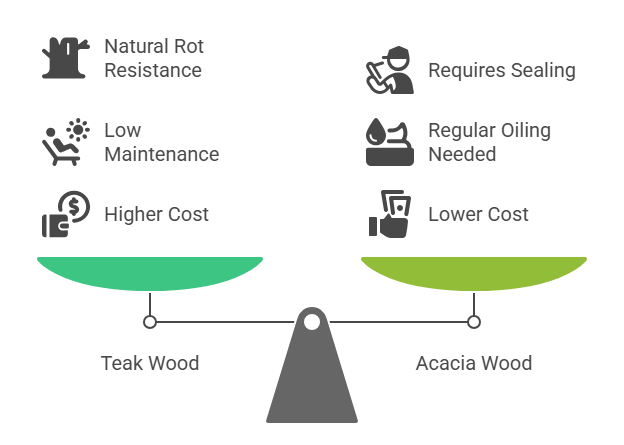
Comparative Durability and Weather Resistance
Teak has always been the best choice for outdoor and indoor furniture. This material is exceptionally durable, especially in humid areas. However, acacia wood is becoming more popular because it is also strong and resilient.
In my years of experience, I’ve found that well-sealed acacia wood furniture can last for many years indoors. With proper care, you can also use it on a covered patio.
Teak, however, is naturally more resistant to rot and insects, making it the undisputed champion for full outdoor exposure. For most indoor settings, acacia wood offers a convincing alternative.
Maintenance and Longevity Differences
Maintenance is where acacia and teak start differing more clearly. Teak’s natural oils give it a head start against the elements, requiring almost no treatment. Acacia, while durable, benefits from regular oiling and protection from moisture.
For those who don’t mind a little upkeep, acacia remains a strong choice. For something easy to care for, teak may be worth the extra cost. However, acacia wood is usually cheaper.
Price and Value for Money
This is where acacia truly excels. While teak is often double the cost or more, acacia wood furniture provides impressive quality for the price. I’ve helped clients furnish entire dining rooms with acacia at a fraction of the cost of a single teak table. For budget-conscious buyers who still want solid hardwood, acacia is hard to beat.
Care and Maintenance: How to Make Acacia Wood Furniture Last
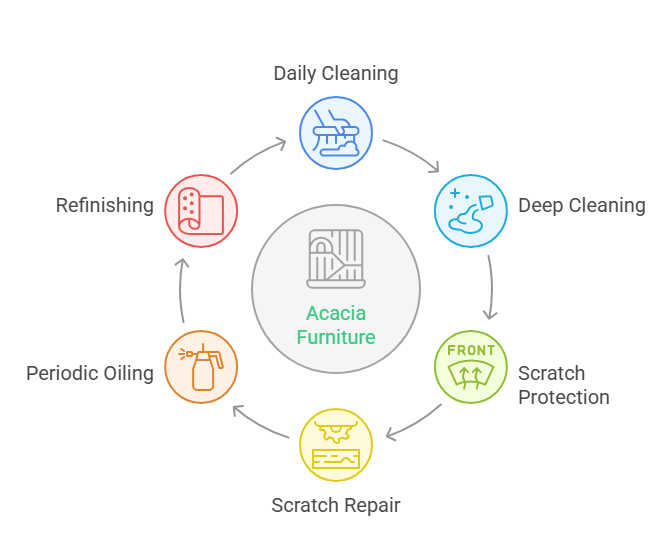
Easy Cleaning and Regular Upkeep
Keeping acacia wood furniture in top shape doesn’t take much. I have always found that wiping down surfaces after meals keeps them looking fresh. A damp cloth, dried right away, works well too.
Avoid harsh chemicals—mild soap and water are plenty. For those wanting a deeper clean, a paste of baking soda and water can help with stubborn stains, but rinse and dry quickly.
Protecting Against Scratches and Stains
While acacia is thorny, it’s not scratchproof. I recommend felt pads under heavy objects and coasters for drinks. For daily use, a quick sweep of crumbs and immediate wipe-up of spills go a long way. If you do get a scratch, light sanding and a touch of oil can blend it right in, thanks to the wood’s forgiving grain.
When to Oil or Refinish for Long-Term Beauty
Every six months to a year, a coat of food-safe mineral oil or beeswax can rejuvenate dried-out acacia wood. If you notice fading or dullness, a light sanding and fresh finish can restore the original beauty.
I have done this for many clients’ acacia furniture. The results are always amazing. It feels like getting a new piece again.
Frequently Asked Questions About Acacia Wood Furniture:
Acacia trees grow worldwide, but I’ve seen most furniture-grade wood sourced from Australia, Indonesia, and Africa. The region affects grain and hue, so don’t be surprised if two pieces look slightly different. That diversity is part of the charm.
I typically recommend acacia wood furniture for covered outdoor spaces only. While it’s sturdy, prolonged rain and sun can shorten its lifespan unless someone treats it specially. A teak outdoor patio set is still the best option. For porches or screened decks, acacia is a stylish and affordable choice.
With good care and indoor use, acacia can easily last decades. I’ve seen tables and chairs from the early 2000s still in daily use, their patinas only growing richer. Maintenance is key—so if you’re willing to invest a little time, the return is significant.
In my experience, the combination of durability, natural beauty, and value has made acacia a go-to for many. For stylish dining tables or storage benches, consider acacia wood furniture. It gives you the look of hardwood but at a lower price.
If you consider it, keep in mind that a small amount of care can have a significant impact. The right piece will be a cherished part of your home for many years.

